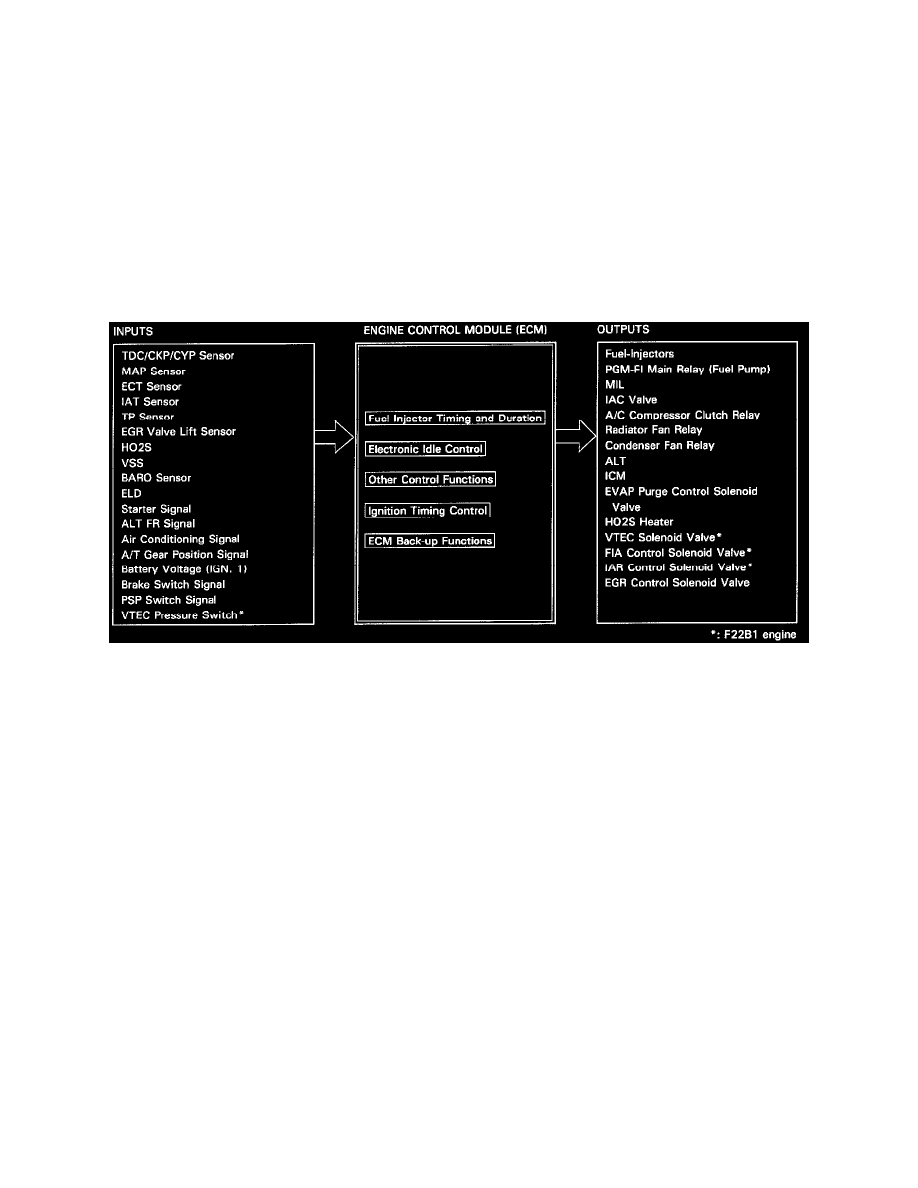Accord L4-2.2L SOHC VTEC (1994)

Engine Control Module: Description and Operation
Powertrain Control Module (PCM)
PCM Function
PURPOSE
The Engine Control Module (ECM) contains memories for the basic fuel injector discharge timing and duration at various engine speeds and
manifold pressures.
When the engine is cold, the A/C compressor is on, the transmission in gear (A/T only) or the alternator is charging, the ECM controls current to
the Idle Air Control valve to maintain correct idle speed.
The ECM contains memories for basic ignition timing at various engine speeds and manifold pressures. Ignition timing is also adjusted for coolant
temperature. The ignition timing control is electronic with no vacuum or mechanical distributor controls.
Other Control Functions
General System Description
STARTING CONTROL
When the engine is started, the Engine Control Module (ECM) provides a rich mixture by increasing fuel injector duration.
FUEL PUMP CONTROL
^
When the ignition switch is initially turned on, the ECM supplies ground to the main relay which supplies current to the fuel pump for two
seconds to pressurize the fuel system.
^
When the engine running, the ECM supplies ground to the main relay which supplies current to the fuel pump.
^
When the engine is not running and the ignition is on, the ECM cuts ground to the main relay which cuts current to the fuel pump.
FUEL CUT-OFF CONTROL
^
During deceleration with the throttle valve closed, current to the injectors is cut off to improve fuel economy at speeds over 1,100 rpm.
^
Fuel cut-off action also takes place when engine speed exceeds 6,500 rpm (F22B1 engine), 6,600 rpm (F22B2 engine) regardless of the
position of the throttle valve to protect the engine from over-running.
A/C COMPRESSOR CLUTCH RELAY
When the ECM receives a demand for cooling from the air conditioning system (compressor control unit), it delays the compressor from being
energized, and enriches the fuel mixture to assure smooth transition to the A/C mode.
EVAPORATIVE EMISSION (EVAP) PURGE CONTROL SOLENOID VALVE
When the engine coolant temperature is below 167°F (75°C), the ECM controls the EVAP purge control solenoid valve which cuts vacuum to the
EVAP purge control canister.
INTAKE AIR RESONATOR (IAR) CONTROL SOLENOID VALVE (VTEC only)
When the engine rpm is below 2,900 rpm, the IAR control solenoid valve is deactivated by the ECM, and intake air does not flow from the IAR.
At engine speeds between 2,900 rpm and 3,700 rpm (mid-range), the solenoid valve is activated by a signal from the ECM, and intake air flows
